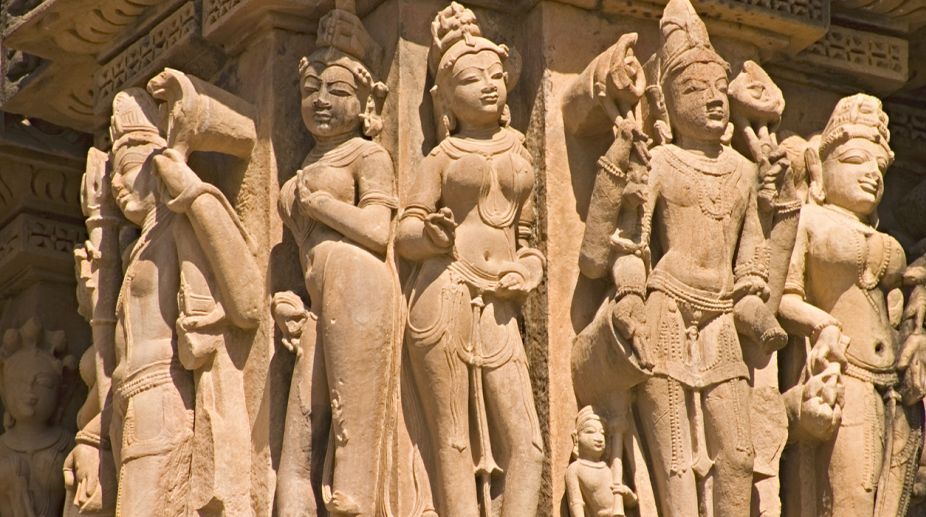The Central Board of Film Certification effected cuts in the film, Lipstick Under My Burkha. This sparked a debate within the moral brigade. But does it not seem that ‘anti-Romeo squads’, who are targeting lovers in Uttar Pradesh, violate the norms and spirit of a civilised society? It is time we realised that moral policing must be seen in the context of an attempt to infringe upon personal liberty.
Scantily dressed cheerleaders at IPL cricket matches have been a subject of debate for nearly a decade with political leaders and the masses condemning obscenity in public. When a semi-nude picture of Aamir Khan from Raj Kumar Hirani’s film PK was released, a petition in the Supreme Court was filed to get the film banned. But the ruling of the court went in its favour: “If you don’t like, you don’t watch it,” was the ruling of the Bench.
Advertisement
The extent of vandalism, which had marked the release of Fire, was on the replay again with protests against the screening of Girlfriend, the Bollywood film on lesbianism. Interestingly, while in recent times sex education and bar girls and AXN and FTV have incurred public wrath, the item numbers in Hindi movies and, more recently, bikini-clad actresses posture reflected poorly on the sanctity of our indigenous values.
This is perhaps because obscenity cannot be unequivocally defined. It bears recall that the Supreme Court had suspended the arrest warrant against Richard Gere for kissing Shilpa Shetty at an AIDS awareness rally. While pornography in words and visuals has often provoked rage among hard-boiled critics, who criticise such “creative endeavours” to flaunt their own middle class morality, there are many who relish the sensual thrill.
Although the moral dimension has often been questioned, there is little doubt that sensual perception is a very ancient phenomenon which exists in one form or the other in all written languages. Pictorially or carved into stone, it can be seen in the relics of every civilisation ~ in the graffiti found in prehistoric caves, in Pompeli or Etruscan sculpture, in the tribal art of various countries, and in Indian temples and monuments.
The sculpture and friezes depict acts which are extremely erotic. In some temples, monkeys are portrayed to strip voluptuous women. At Khajuraho there is sculpture of a donkey sodomising a man. The Latin poet, Maximianus Etruscus, narrates his affair with a Greek girl, in that the match is as unlikely as that of the couple in Melvyn Bragg’s ‘A Time to Dance’, but the outcome is more realistic. The girl strongly scolds her elderly lover, seeing his impotence as a symbol of the failure of nature. There was a time when obscenity was merely a word that was uttered by a few prudes and censorship was unheard of in India.
From the days of Kalidas and Bhasa to 18th century formalists like Behari and Deb, never was a poet accountable to legal prosecution. despite the use of sexual imagery and depiction of sex. The first official blow to freedom of literary expression was inflicted in 1856 when the East India Company passed the Obscene Books and Pictures Act.
The casualty list included the books of Vatsyayana, Kalyanamalla and Jayadeva. Worse still, the Act imposed a large measure of British puritanism on the cultural climate of the country, which subsequently influenced the creative sensibility of our writers. It is not by accident, therefore, that most writers in the days of British India tend to maintain a safe distance from sex.
Stalwarts such as Premchand, Bankim Chandra, and Sarat Chandra referred to sex either to reprehend or romanticise the same. For instance, Gobar’s almost compulsive desire to make love with his wife Jhunia the night following the death of their child (‘Godan’); Govindalal’s irresistible fascination for the widow Rohini and their subsequent elopement (Krishna Kanter Will); and Achala’s illicit relationship with Suresh (Grihadaha) are examples of sex showing up in their books. But in all such cases it is either unceremoniously rejected or there is a certain dumbing down.
These writers never viewed sex as a natural and necessary human urge rightfully claiming its proper place in our social life and values ~ at once savage yet humane; dark yet compulsive; tough yet tender; poignant and sweeping but intrinsically human. Ironically, however, while the British jettisoned their Victorian prudery, we are still perpetrating their self-righteous legacy. Our obscenity laws, at least in their implementation, are as rigid and severe as ever and our censorship at once stultified and highhanded.
The authorities of course, have reinstated the works of antiquity and religious significance, whatever their sexual content, into portions of respectability. But they attack sexual themes in contemporary secular literature. In spite of its aesthetic validity and scientific necessity, it is looked down upon. In fact, it often lands the writer or producer of a film into the midst of banal controversies. In a paradoxical situation, the law of the land does not object to visuals of ‘Kamasutra’ of Vatsyayana, but the same law puts its foot down if a theatre group wants to perform Tendulkar’s Sakharam Binder (a powerful dramatisation of human debauchery).
Again, the pavements of our cities display pornographic “literature”, but the publisher of Yaron ka Yar (a story of bawdy conversation on corruption in high places) is threatened with arrest. All copies of Buddhadeva Bose’s Raat Bhore Bristi (a gripping novel on an incestuous relationship) were confiscated and destroyed.
The general attitude towards matters sexual has been at the root of many of our ills. It has encouraged double-think and double-talk, self-delusion and hypocrisy. In its hopeless endeavour to suppress and proscribe sex, it has bred only perversion and distortion, vulgarity and obscuranticism. More importantly, it has led to a certain blunting of our perceptions and distortion of our tastes. The common preceptor, therefore, has almost lost the sense of distinction between obscenity and sex.
The graffiti that he sees is as objectionable as the erotic and life-like sculptures of Khajuraho and Konark. In 1983, the committee on Portrayal of Women in Mass Media demonstrated outside a cinema hall in New Delhi that was screening a film titled, Crazy Lady. “Annu’s lust for sex in bold way” read the film’s poster. The symbolic protest was designed to alert the government and the media to the anti-female bias. It might be tempting to dismiss the committee’s protest as prudish, but it was a plea for good taste and artistic decency.
Given the correct inclination, it ought to be possible for a film director to depict a bedroom scene without recourse to poor taste and pornographic titillation. As Graham Greene once remarked: “I think that Anthony Trollope evokes marvellously the passionate sensuality between Captain Burgo Fitzgerald and lady Glencora Palliser without having to write, ‘I caressed her from breast to thigh’. Anyone can do that, and everyone knows how it’s done”.
(The writer is a former Associate Professor, Dept. of English, Gurudas College, Kolkata)











